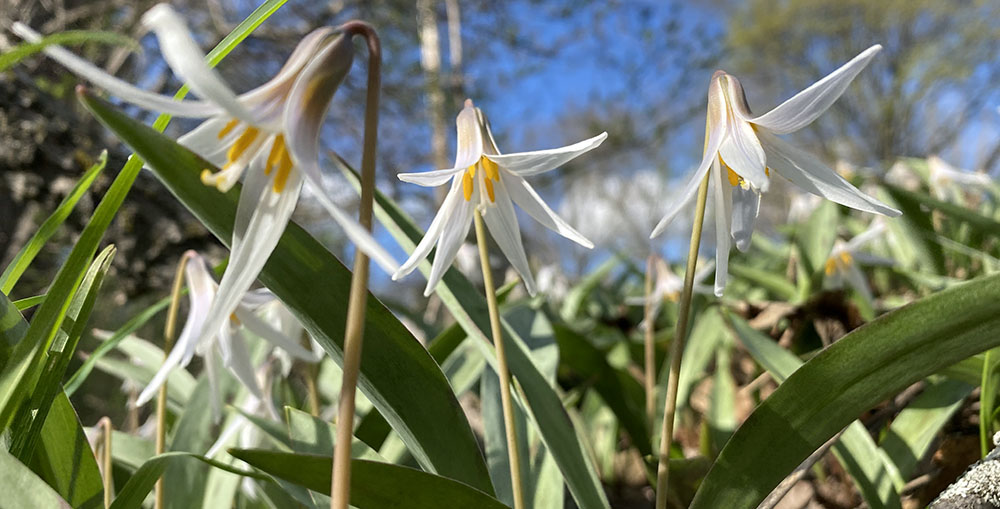
Creating a Bird Refuge at Doctors Park
December 19, 2022 | Topics: Places
By Ney Collier
2022 was a splendid year for Doctors Park. Dozens of individual volunteers arrived at three official weedouts on foot, bicycle and even in elegant vintage cars, including a black Jaguar sports car and a white convertible Chevy Corvette. Bruce Fuller and his dog Bindi presided over the command and control table, distributing bottled water and snacks. Neil Gollhardt and Patricia Ryan scoured the steep east bluffs for mature burdock plants that are death traps for birds, bats, butterflies and critters. Scott Prill conducted heroic solo buckthorn and garlic mustard bashes. William Matthaeus tackled wild grape vines that were suffocating ninebark and gray dogwood shrubs.
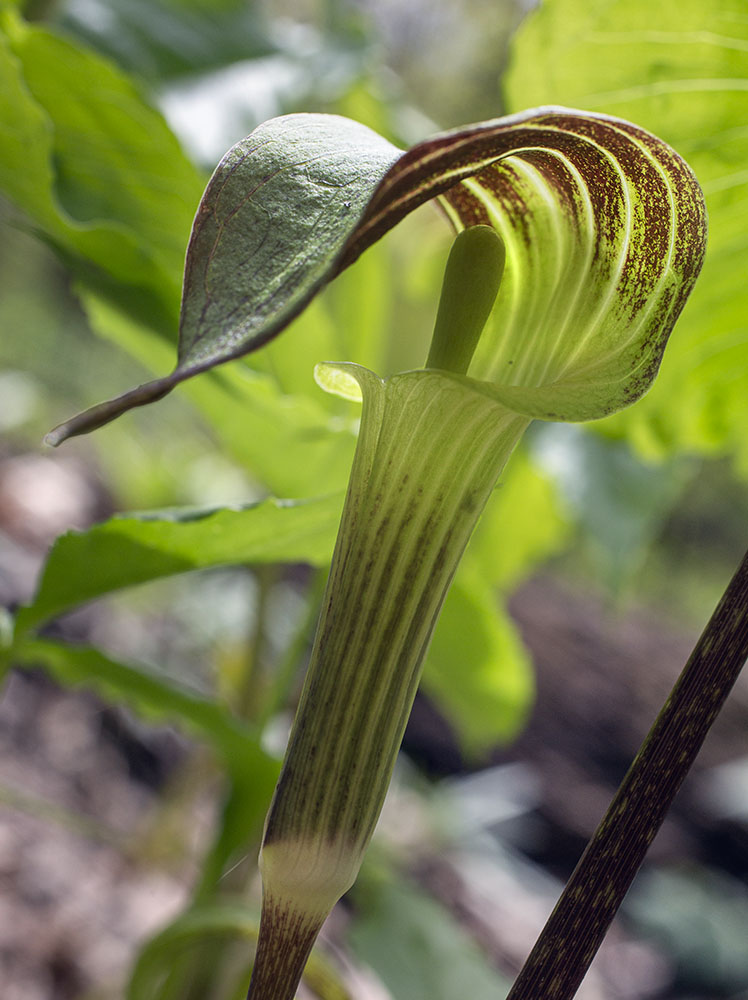
In addition to official weedouts, teams of young people from Marquette University, UWM, Cream City Conservation Corps and University School worked hard to prepare the area south of the hummingbird zone for the planting of ten pussy willow trees (Salix discolor).
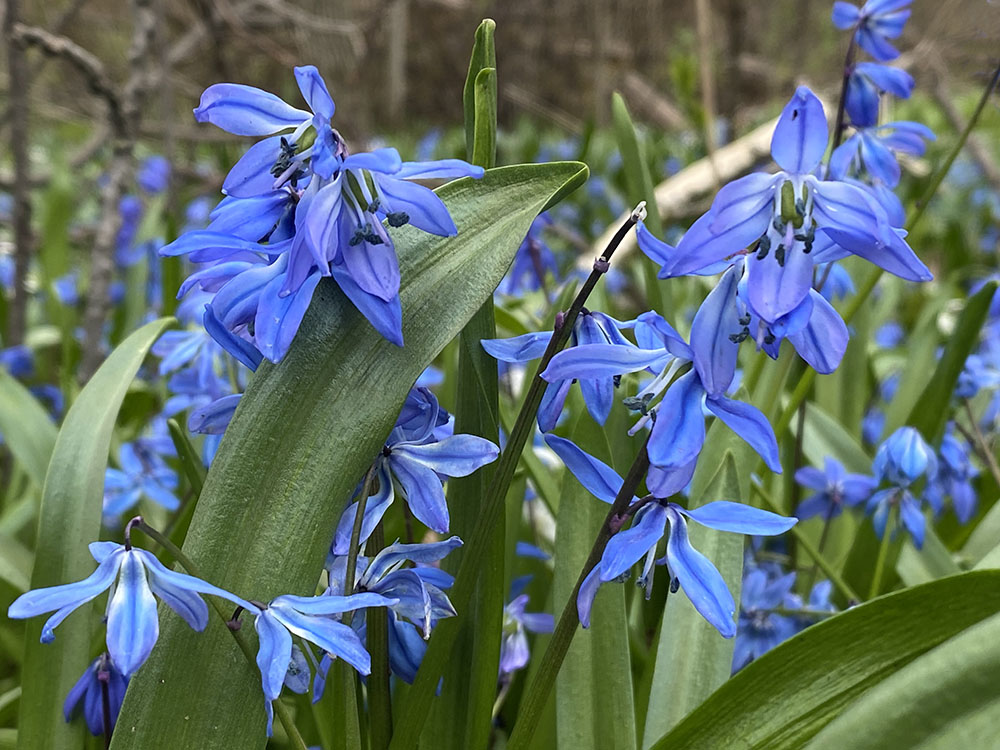
In April, Burke scholars from Marquette University broke up and scattered dead native sunflower plants in the migrating bird area. They also dug out invasive Arctic scilla bulbs, emerging burdock and garlic mustard. At the end of their stint, we roared three cheers for Doctors Park. Yearly removal of invasive plants has allowed delicate spring beauties, trout lilies, Jack-in-the-pulpits and other native spring ephemerals to flourish.
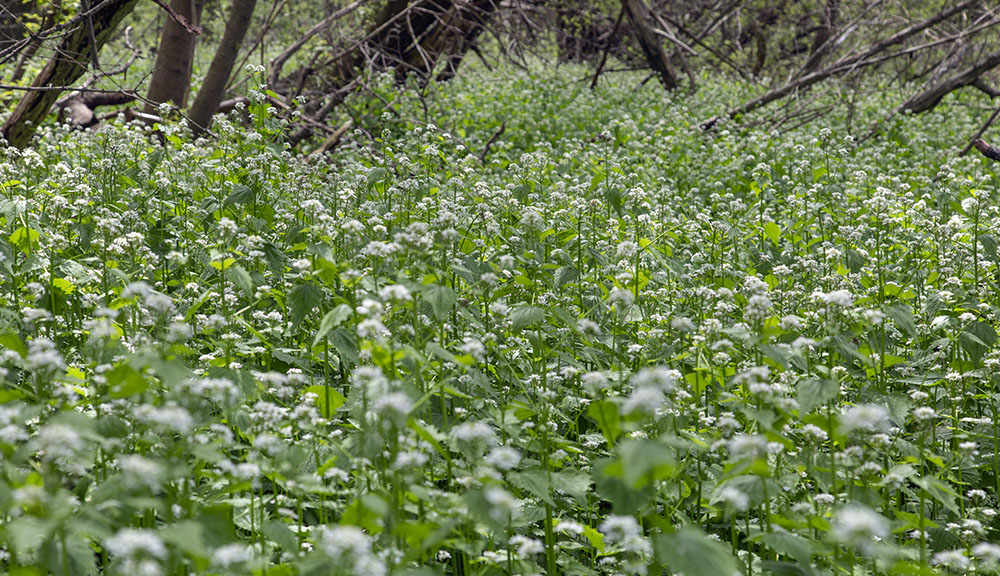
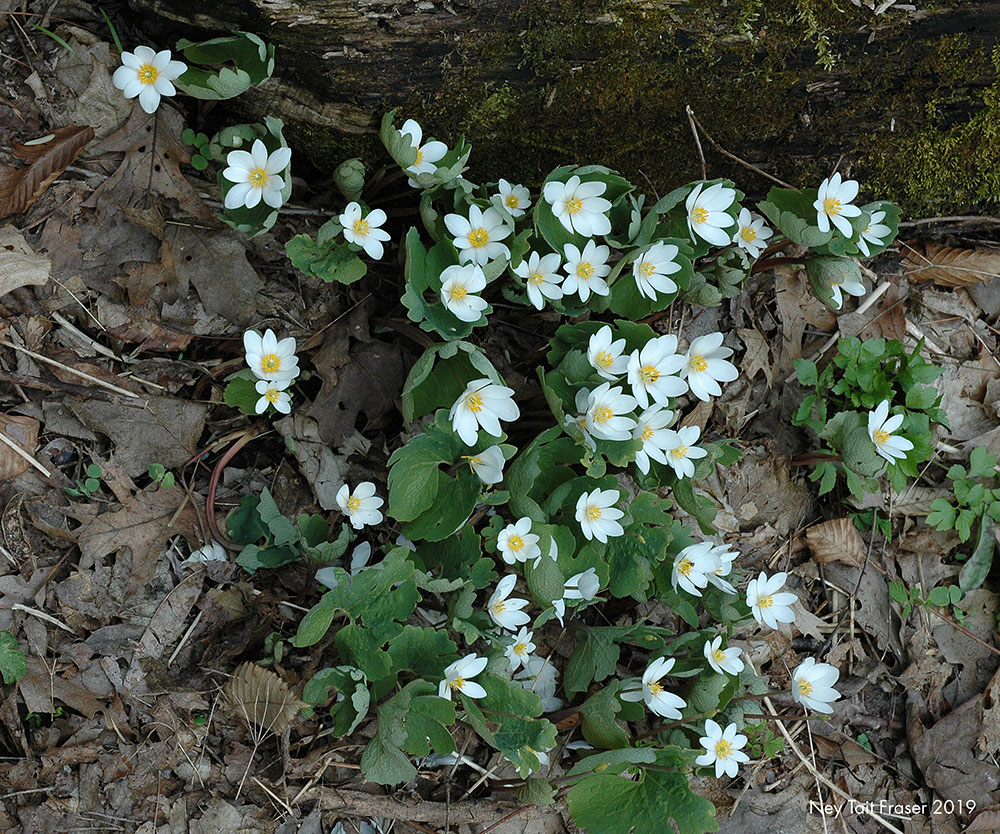
Cream City Conservation Corps now transports their excellent teams in a smart new van. With their help, we dug out day lilies and Arctic scilla, placing the bulbs on asphalt or concrete before stomping on them. Later on in the season, colossal amounts of buckthorn and Canada thistle were removed from the willow site by teams from Cream City Conservation Corps.

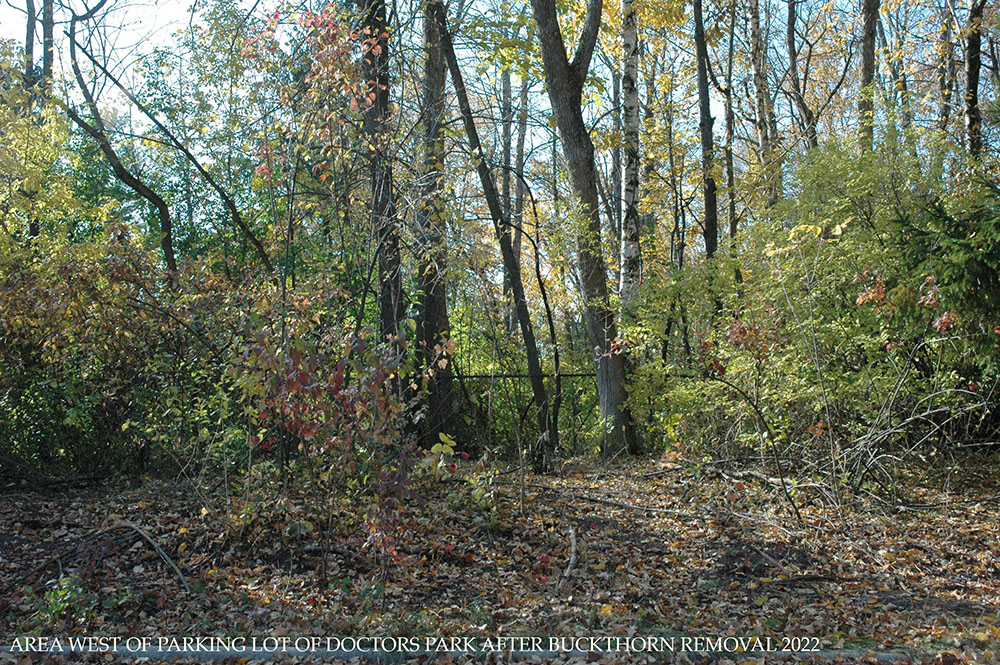
In June, Tom Benson alerted friends of Doctors Park about a large dead ash tree that had fallen down in picnic area number one damaging fences around trees we had planted years ago. Six of us got at crack of dawn on June 25th to mend fences, remove two dead white pine trees and enlarge other fences. A robin had made a nest in the American beech tree planted by boy scouts.

Students from Milwaukee’s University School arrived with staff in two vans. None of them had used Pullerbear tools before. Every time a particularly large buckthorn was demolished, there was a loud cheer. Girl Power was evident with strong young women levering out buckthorn plants.
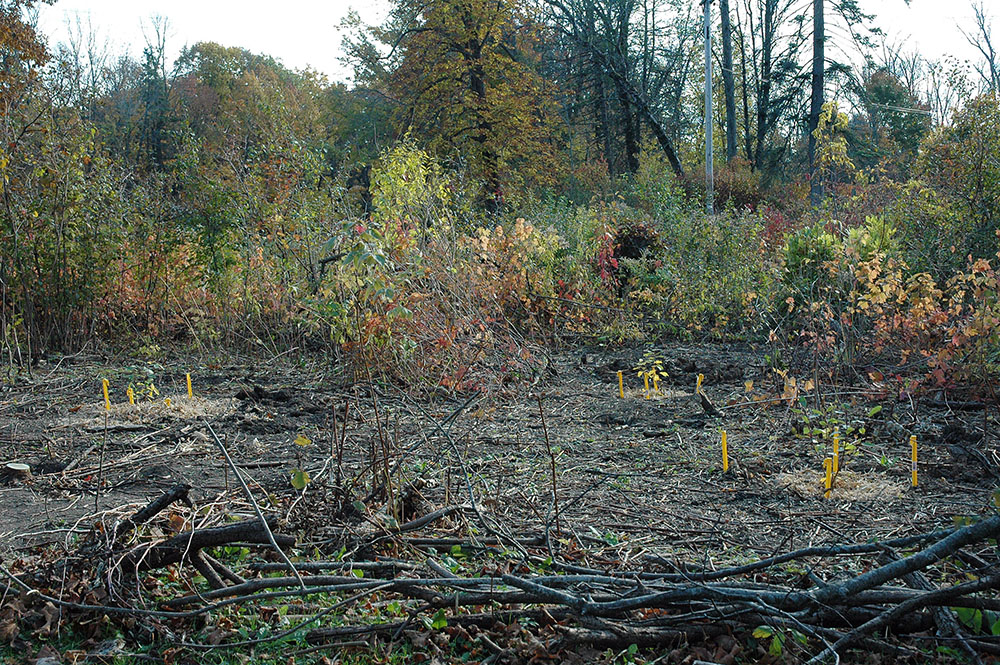
Ten days before they were planted, the pussy willow trees were delivered to my house during a particularly cold spell. They had to be unpacked and brought inside at night to prevent their roots from freezing. Earlier in the year, Park’s Forestry Department had cut down and hauled away several dead ash trees in order to create full sun conditions for the willows. The night before the planting event, I filled twenty one-gallon jugs with water from my rain barrels. I delivered the jugs to the planting site along with ten bags of composted manure. The next day, friends of Doctors Park plus a UWM student dug the holes and planted the trees in them. Shortly after the planting, I constructed chicken wire fences around the trees to prevent browsing by deer and rabbits.
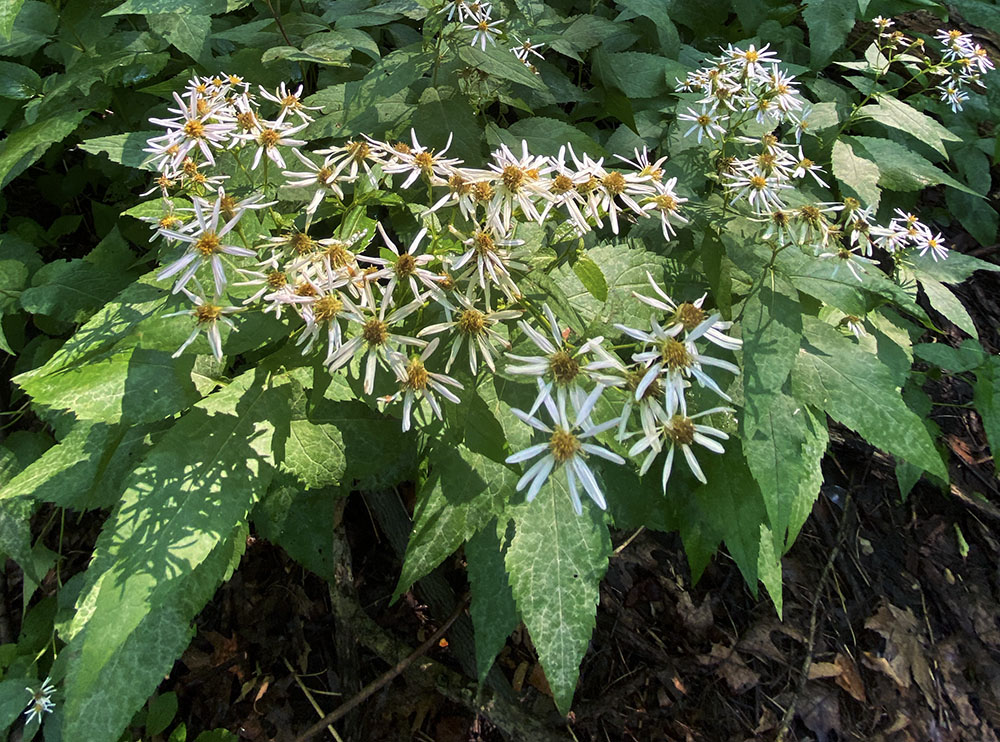
Lawrence Goodman made three elegant bluebird houses for the park. He also came up with an Adopt a Stump idea. Neil Gollhardt created fundraising signs which were placed on the stumps of ash trees killed by the emerald ash borer. This effort raised enough money to purchase and plant a red oak and a chinkapin oak tree in the park.

For the first time since native blue flag irises (Iris versicolor) were planted along Fox lane in 2020, they bloomed. What the flowers lack in size they make up for in nectar which attracts hummingbirds. Obedient plants (Physostegia virginiana) provided the marvelous spectacle of bees gliding in and out of their silky, pink flowers. A dozen royal catchfly (Silene regia) plants were added to the hummingbird zone. I made a map indicating the native plants in the hummer zone plus native plants that have returned.

Ohio spiderwort (Tradescantia ohiensis) plants were added to the monarch way station. They had to be protected by a fence. Common milkweed (Asclepias syriaca) bloomed and produced seed pods for the first time. Halley Minser pointed out that forked aster (Eurybia furcata) is growing in the monarch way station. It is a rare and threatened species. On New Year’s Day, William Matthaeus and Ney braved the bitter cold to tidy up the monarch way station.
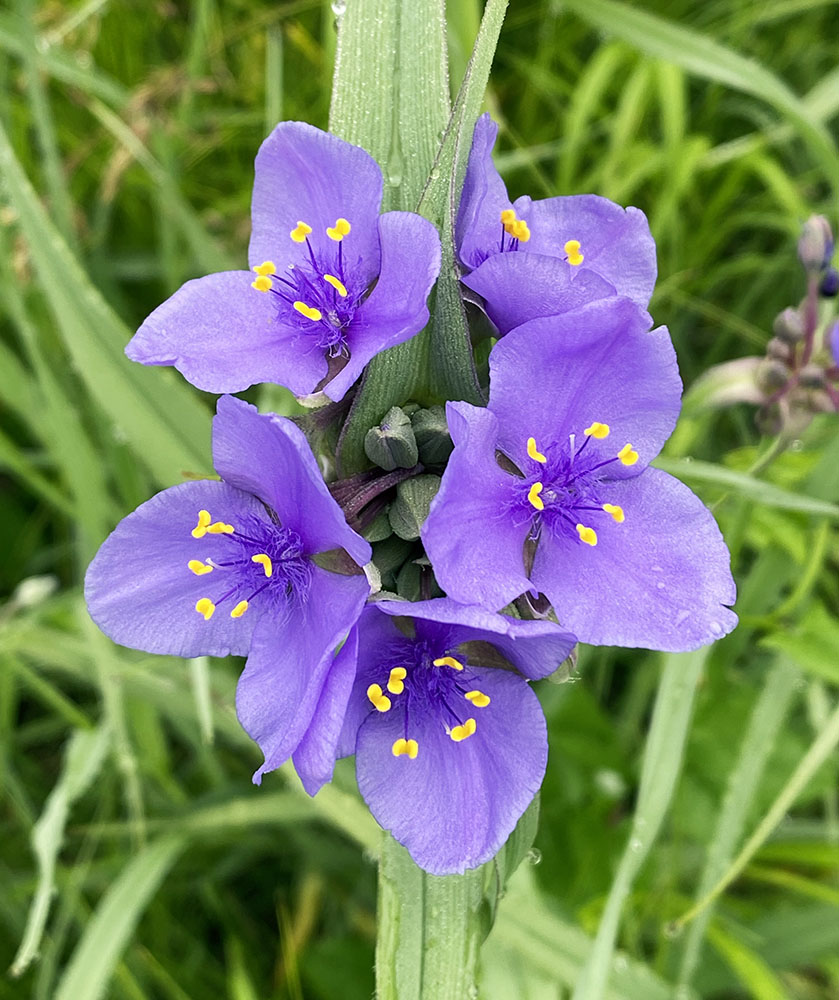
The transformation of Doctors Park from a perilous area of invasive plants into a food-laden refuge for birds is being achieved by groups of people having fun working together to make the future better and to honor Dr. Joseph Schneider’s wishes that the land he donated to Milwaukee would be kept as a wildlife sanctuary.
Ney Collier is a volunteer with Friends of Doctors Park. All images courtesy Ney Collier, except as noted. The featured image at the top of trout lilies is by Eddee Daniel.
4 thoughts on "Creating a Bird Refuge at Doctors Park"
Comments are closed.


Fabulous documentation and Images.
Thanks to workers and those that inspire
Rochelle Whiteman
Thanks!
12/21/22.
This morning, as the longest night of the year completes its shadowy sojourn, it is one degree. A red cardinal is briefly perched on the feeder , providing bright contrast to the snow and ice on the narrowing Rock River. Juncos are on the ground scooping up fallen seed and sparrows join the chickadees to pick out fresh frozen feed. All the wingeds are fluffed out and twice as fat to bear the temps. Ducks pack together as one, huddled on the edges of the flow of water. All seems monochromatic now save for a solitary evergreen against grey skies.
How refreshing to see these trout lily photos, the color of moonlight, nodding to Mother Earth. Sacred blood root photos are a reminder to be present to change, look deep and let the elements flow. Like the dark that transitions to light, there are mysteries within.
Thanks Jude!